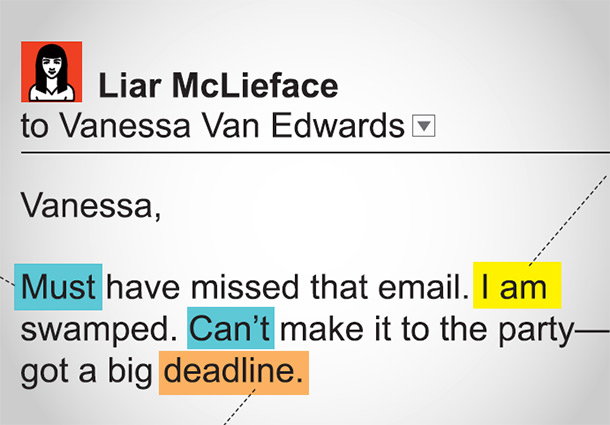Here’s a scary number: Social psychology expert Jerald Jellison estimates that we are lied to as many as 200 times per day. That isn’t all by email, of course, but plenty of it may be — and even the smallest false details can impact the productivity and financial success of a business. Knowing how to decipher truth from lies helps you make better deals, find the right partners and land the right hires. That’s why, as more and more of our business communication happens digitally, it’s essential to be able to spot written deception. Success depends on it.
Luckily, the science of lie hunting extends into the digital world. It’s called statement analysis, and it’s a process that analyzes how people use their words to determine whether they’re being honest. The technique is the brainchild of Mark McClish, a former instructor at the U.S. Marshals Academy, who studied deceptive statements and found linguistic patterns among lies. Here are three of his key warning signs to look for in your emails.

People don’t like to take ownership of their lies, so they will often distance themselves from them. A liar might say, “Got stuck in traffic” instead of “I got stuck in traffic.” A dishonest person might also use less my, me and ours in place of the, a and that. Let’s say you email a manager to complain about a deliverable that didn’t meet expectations….

